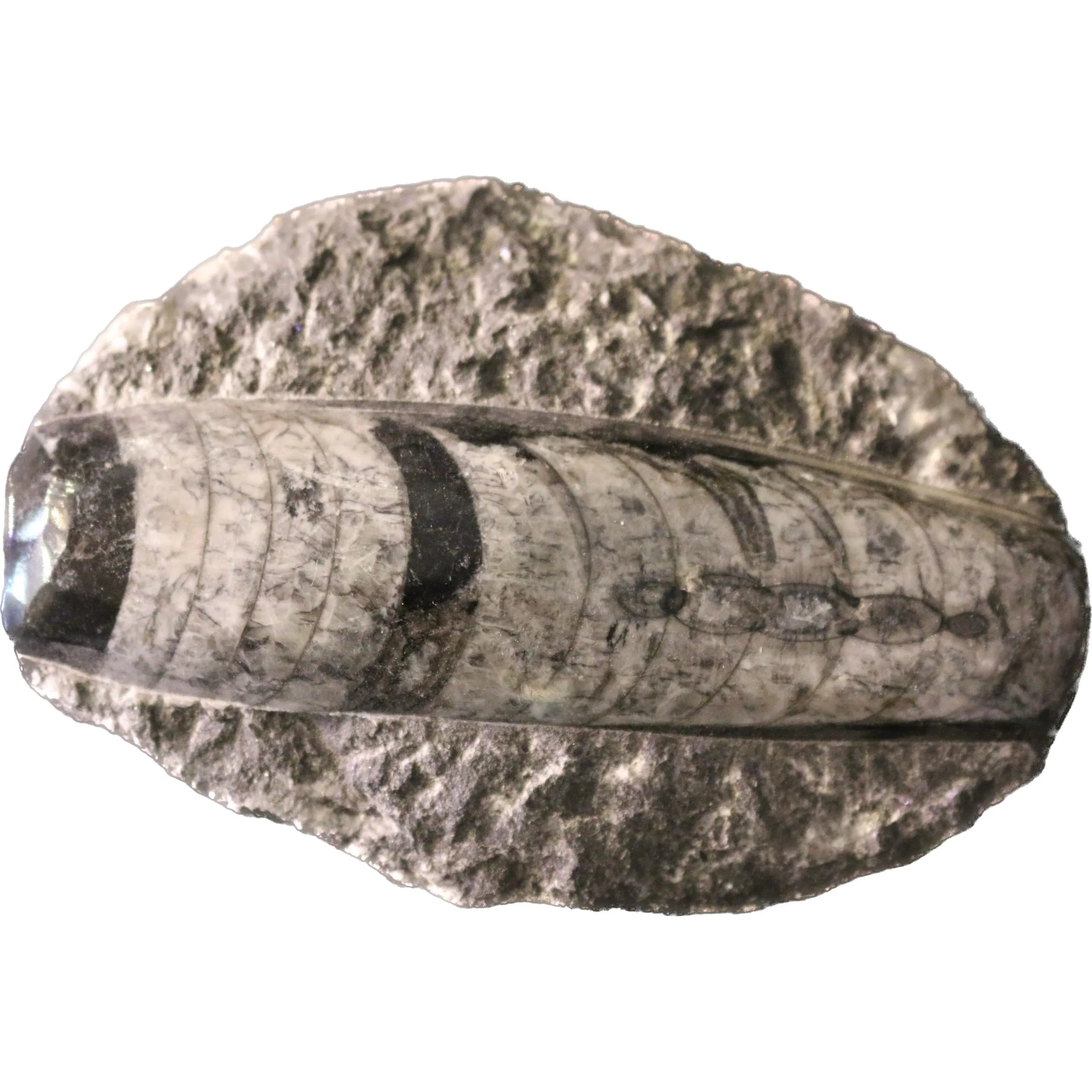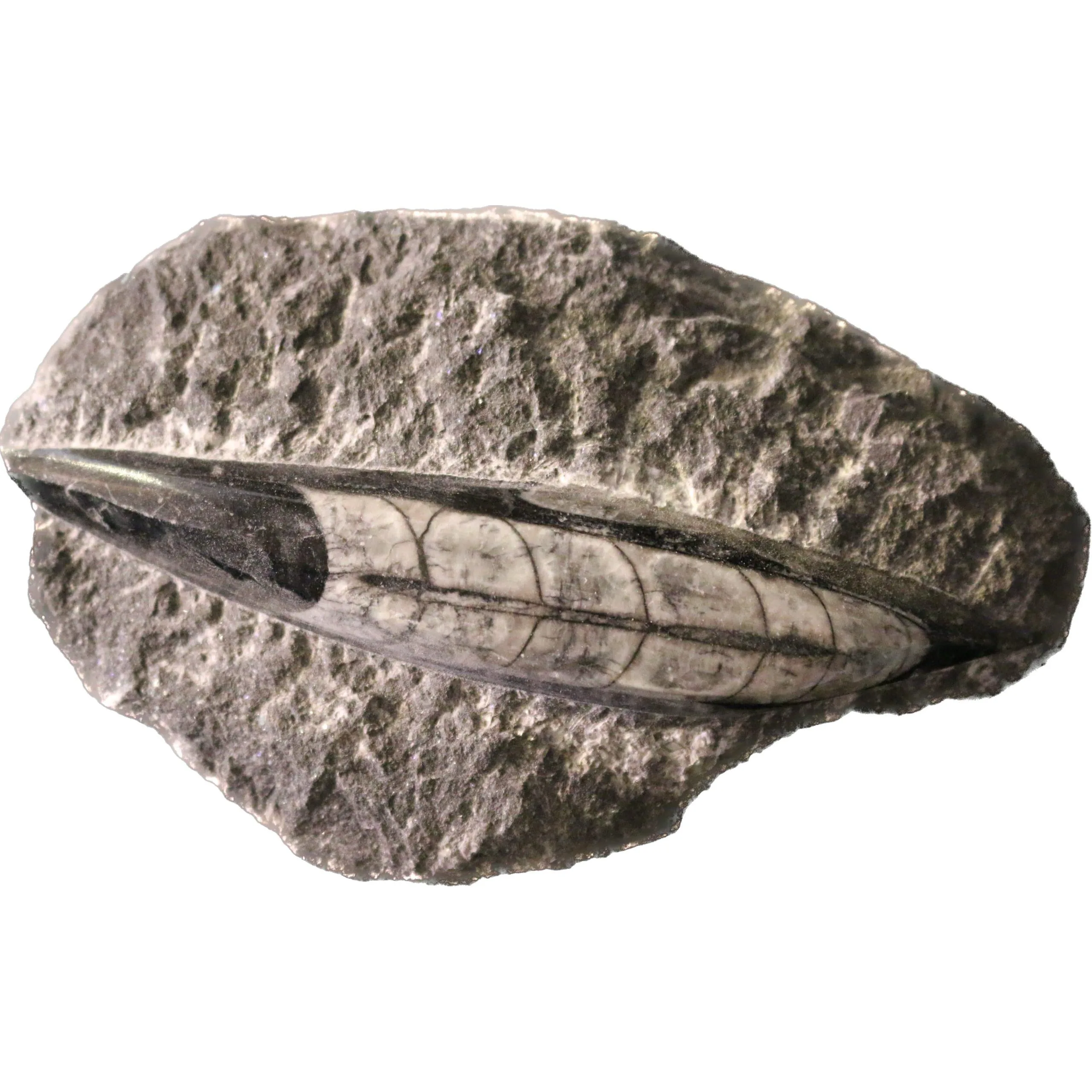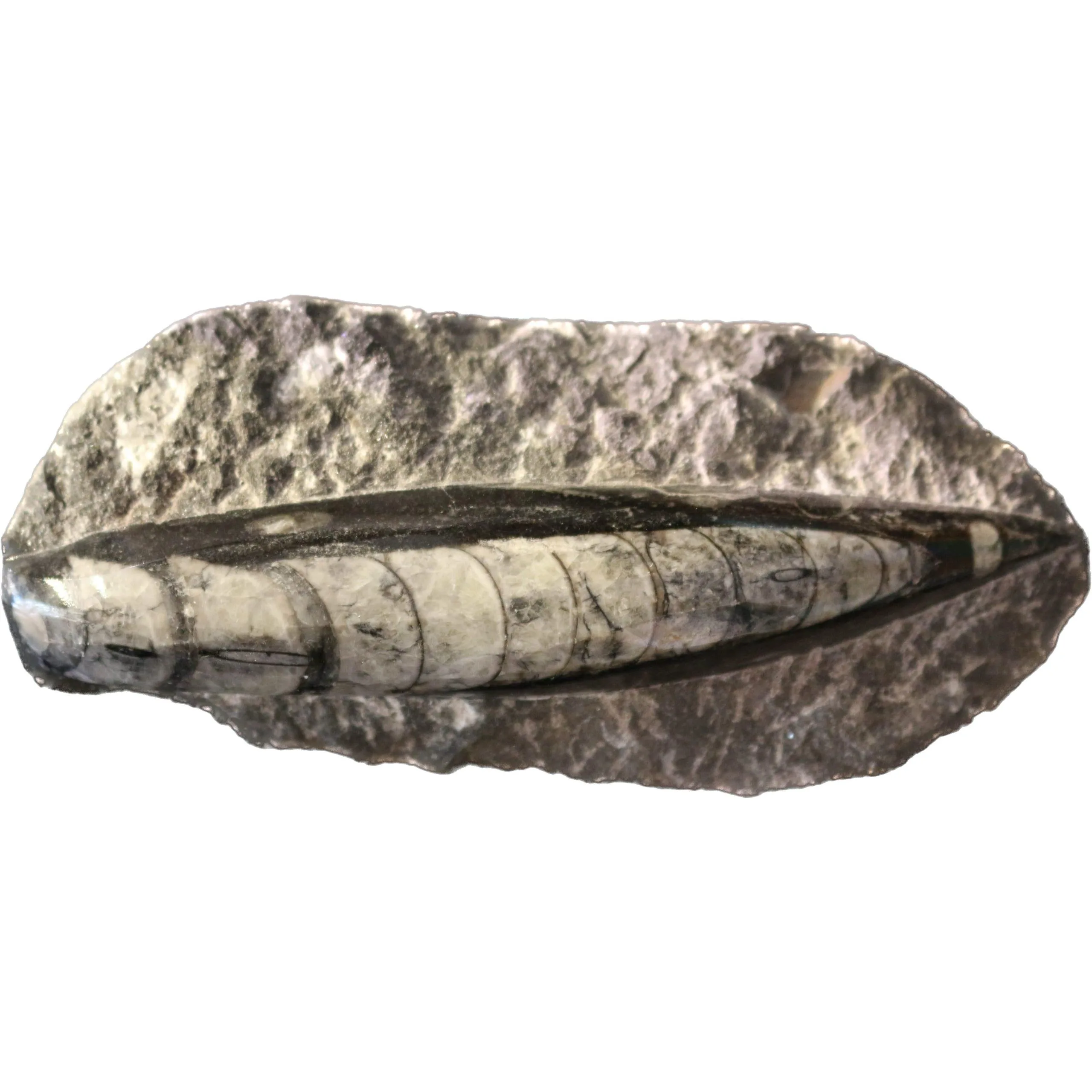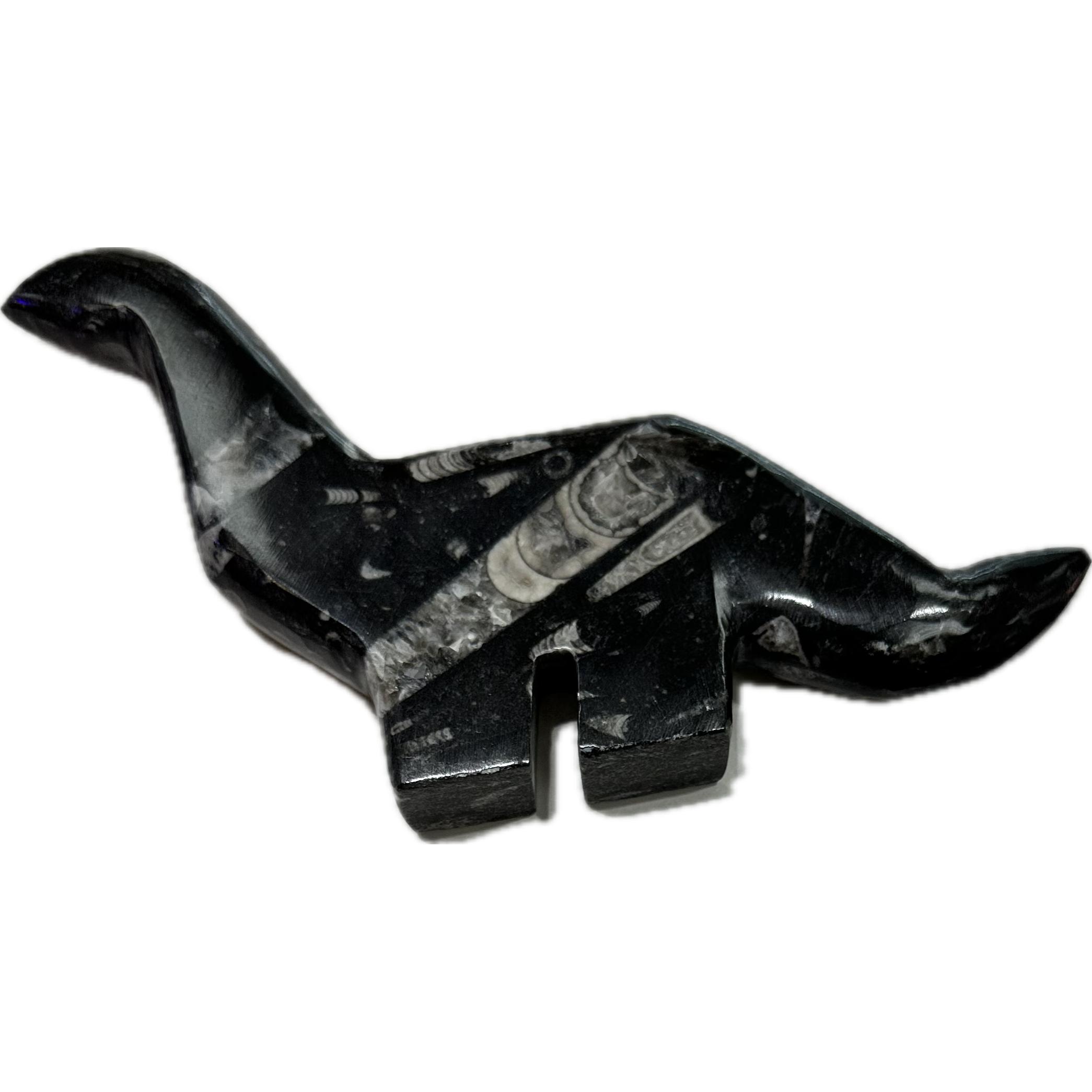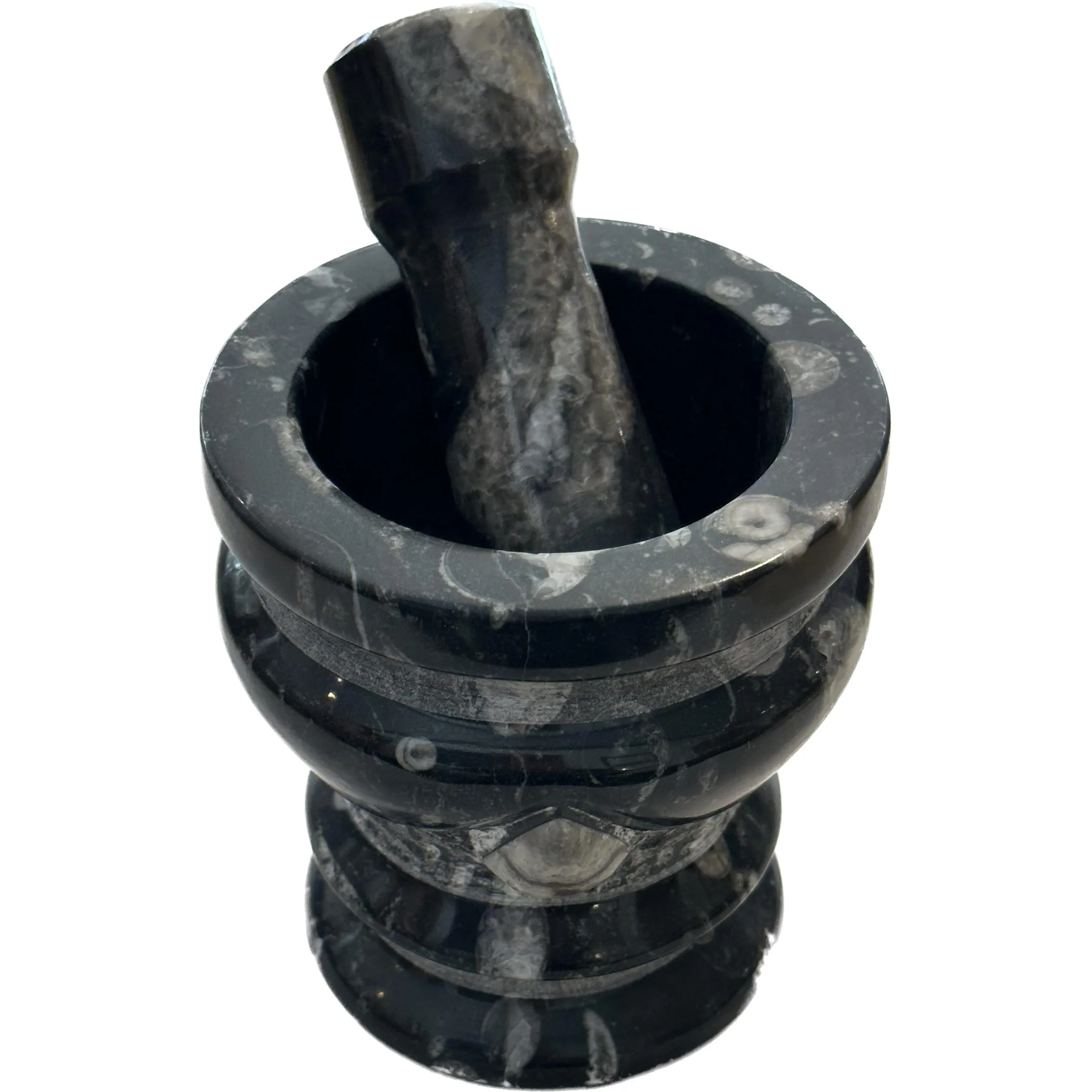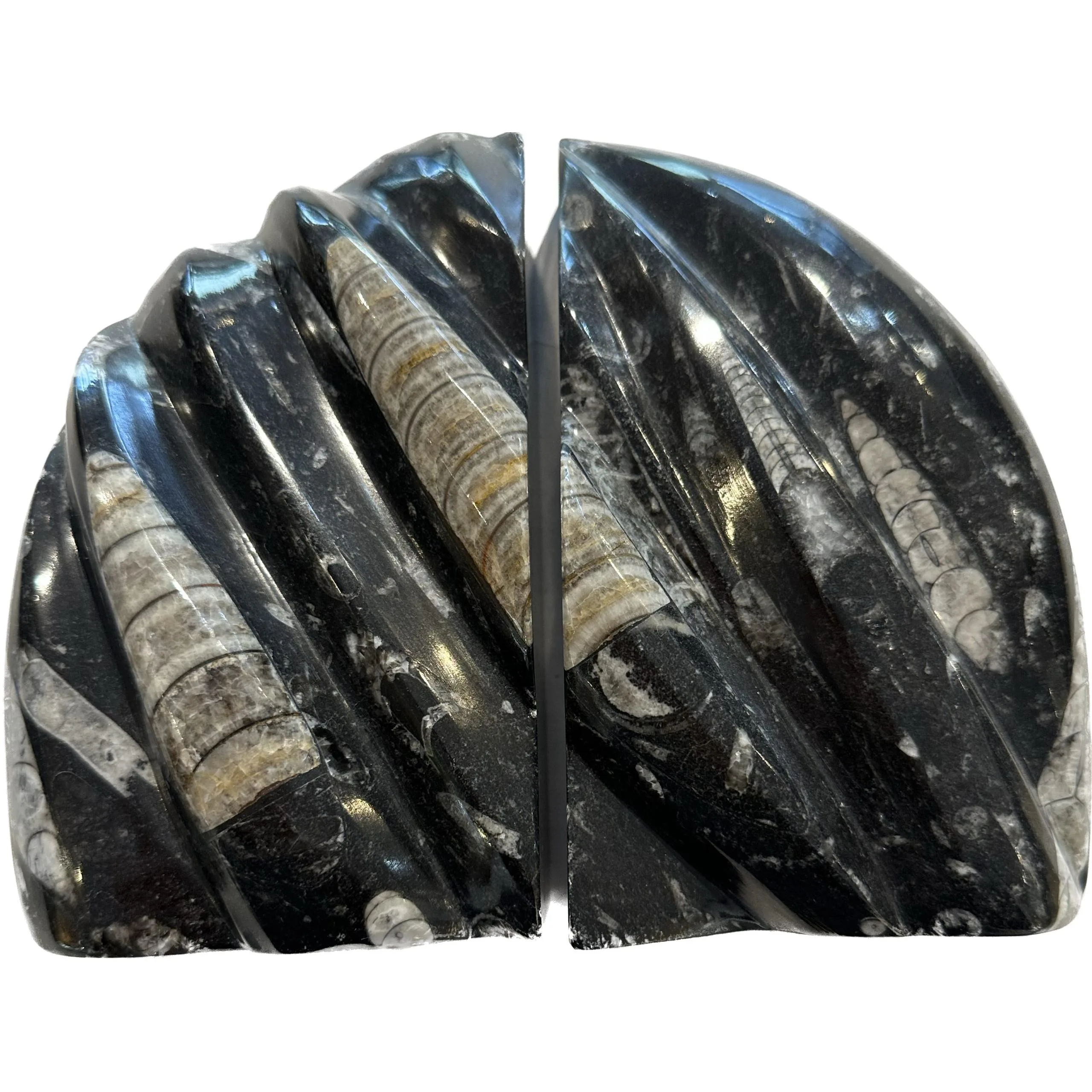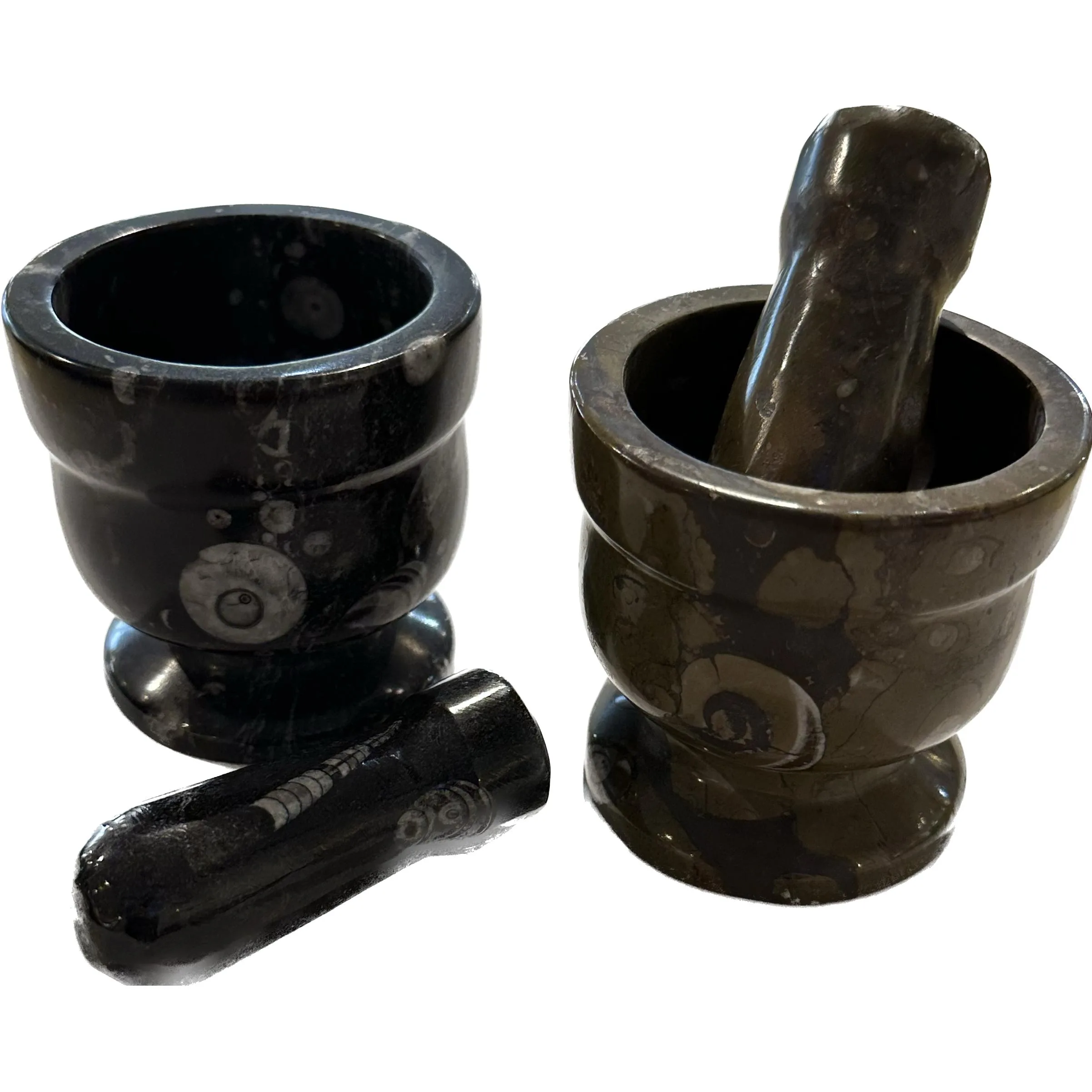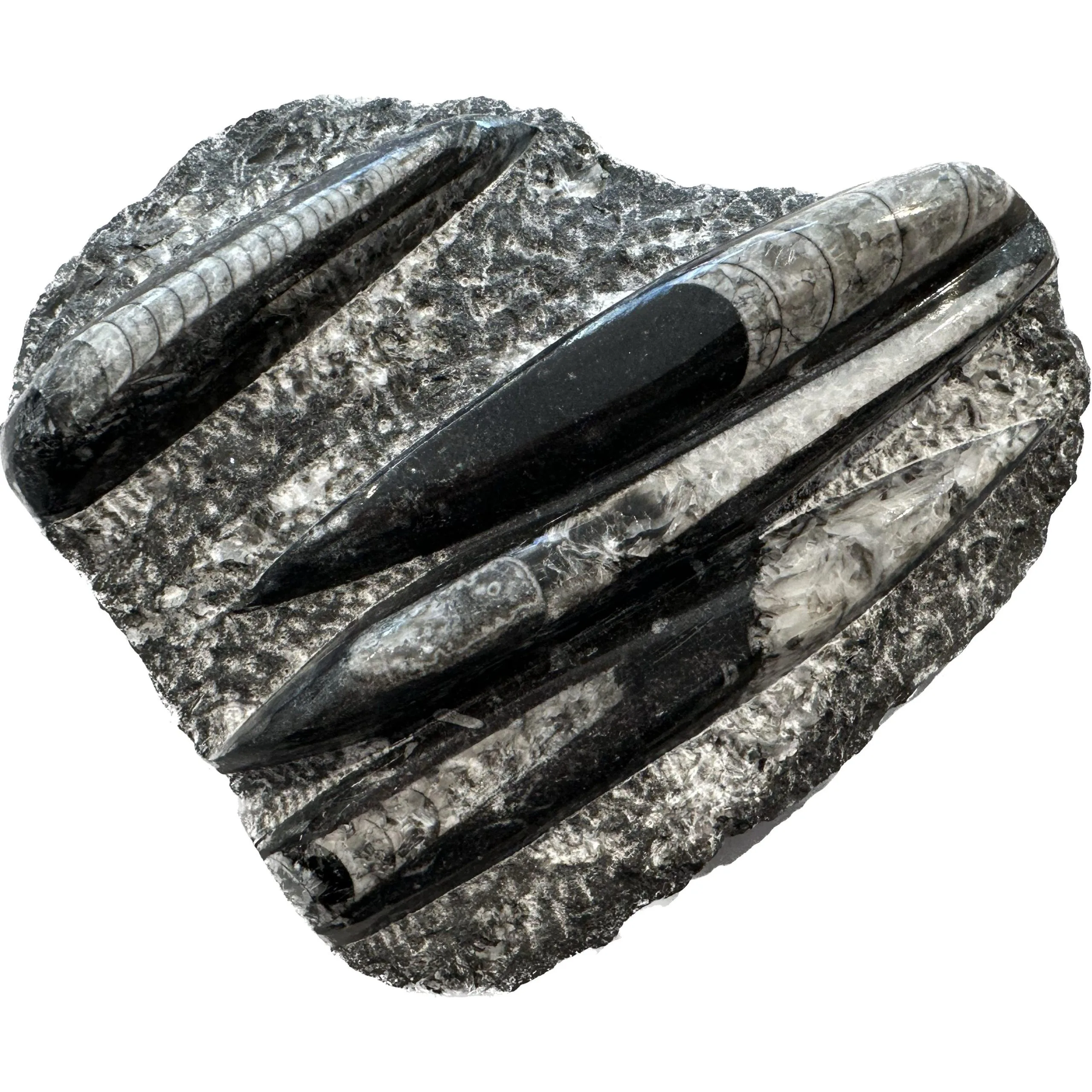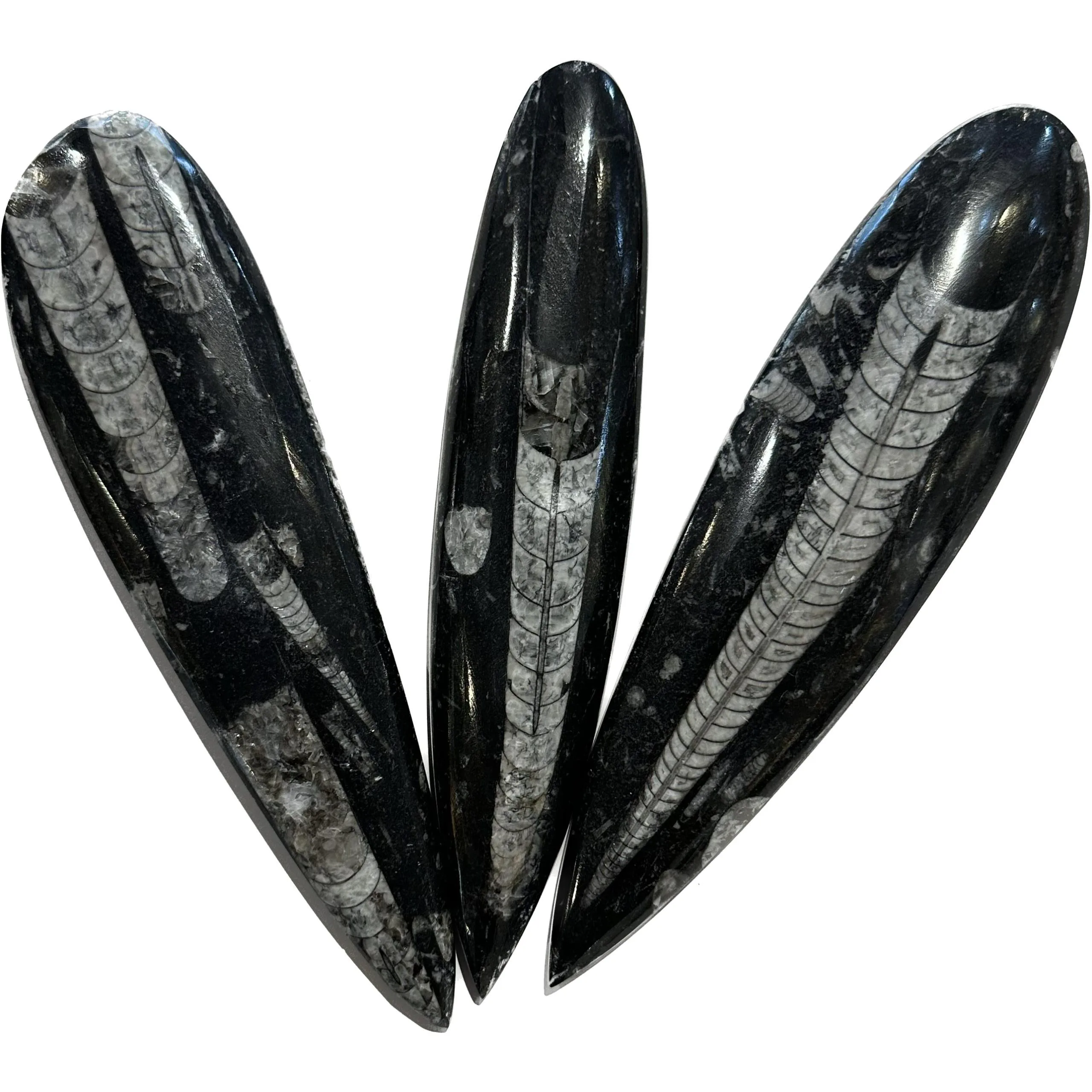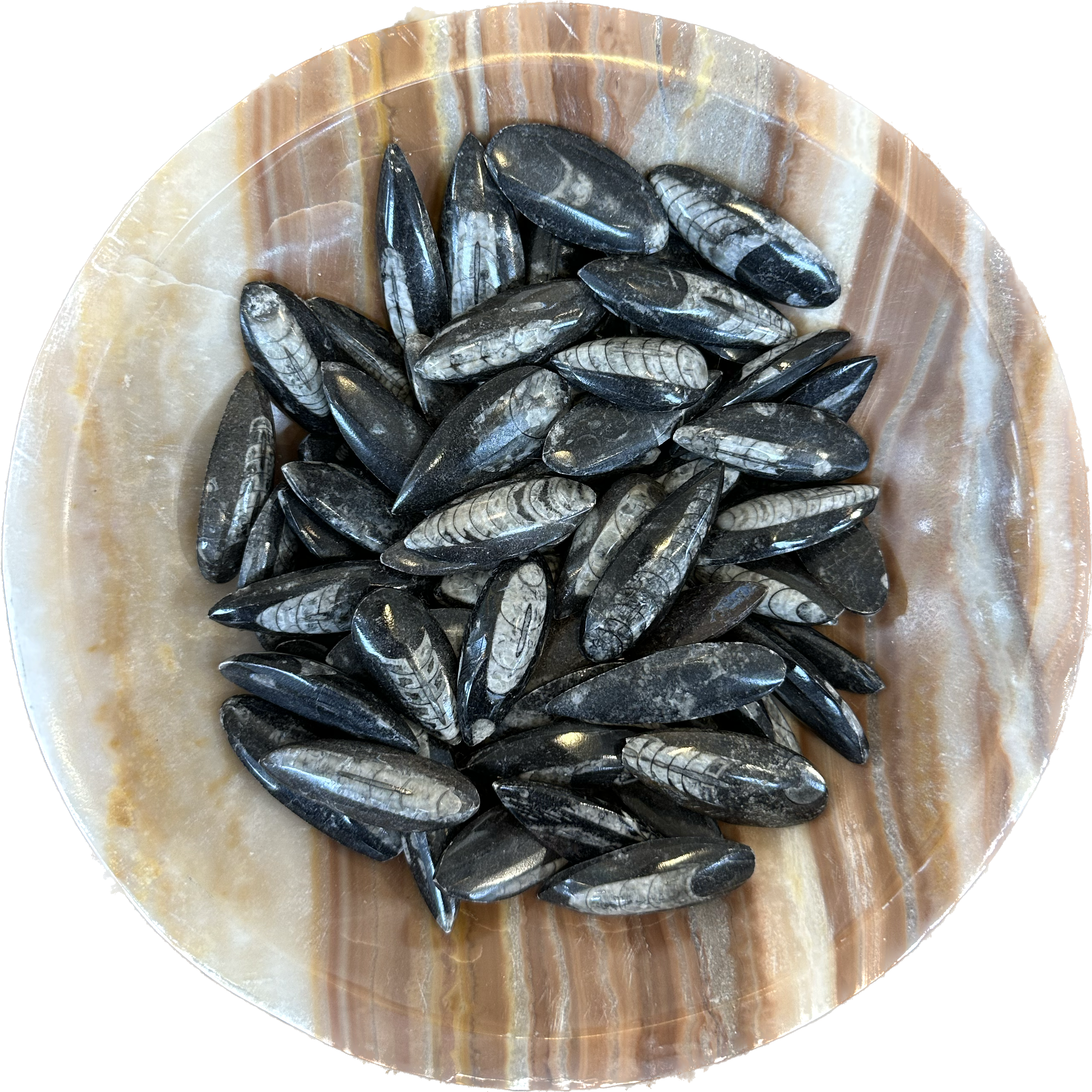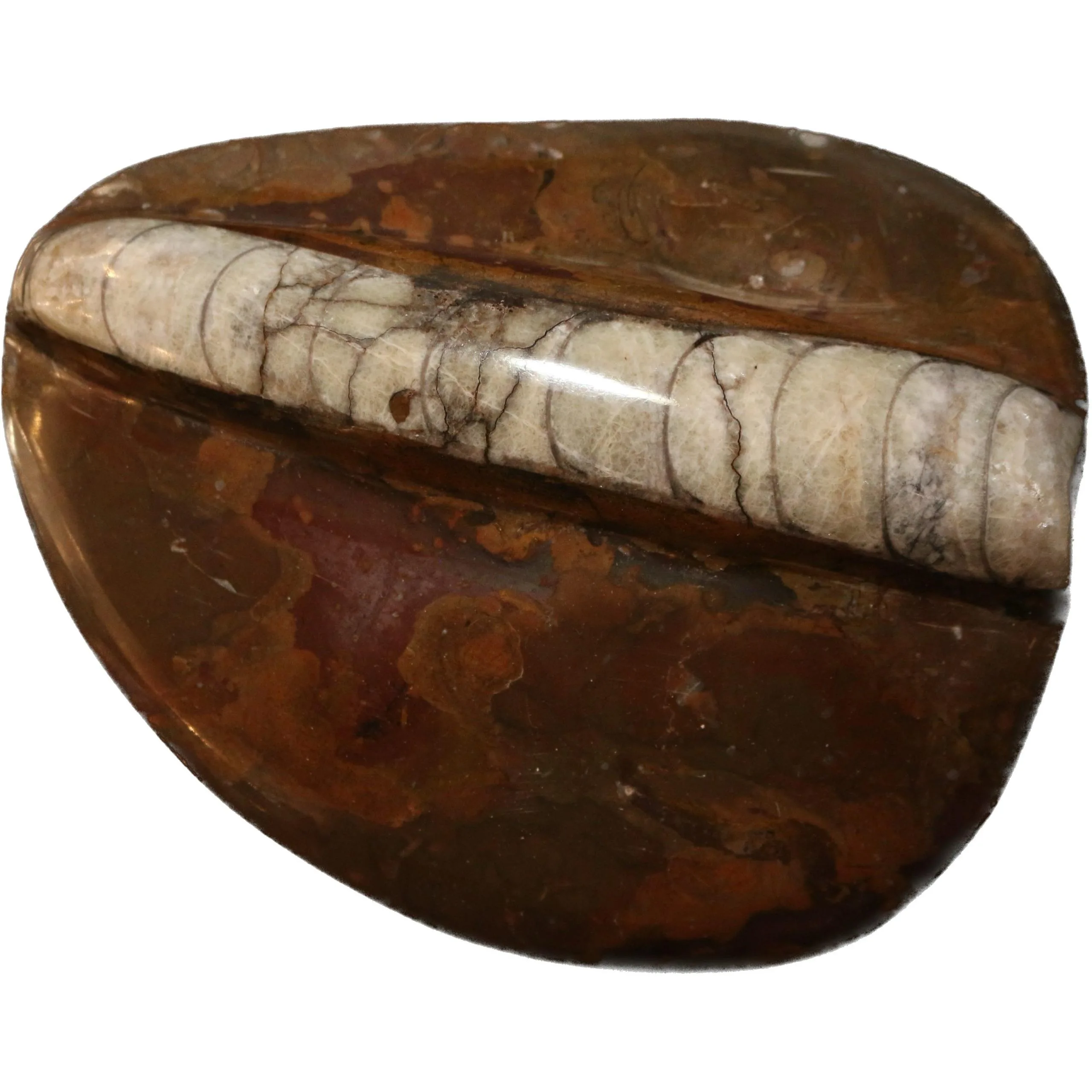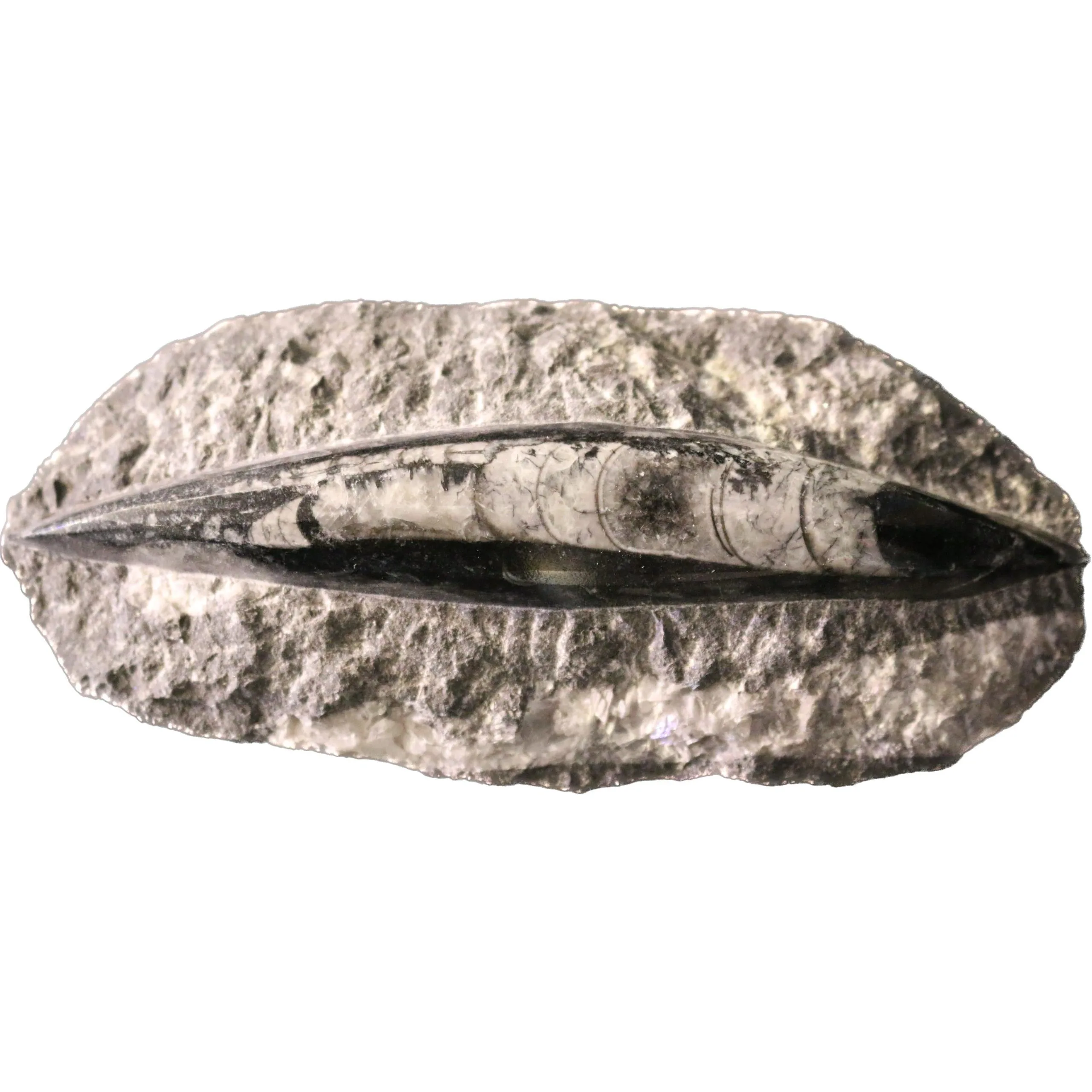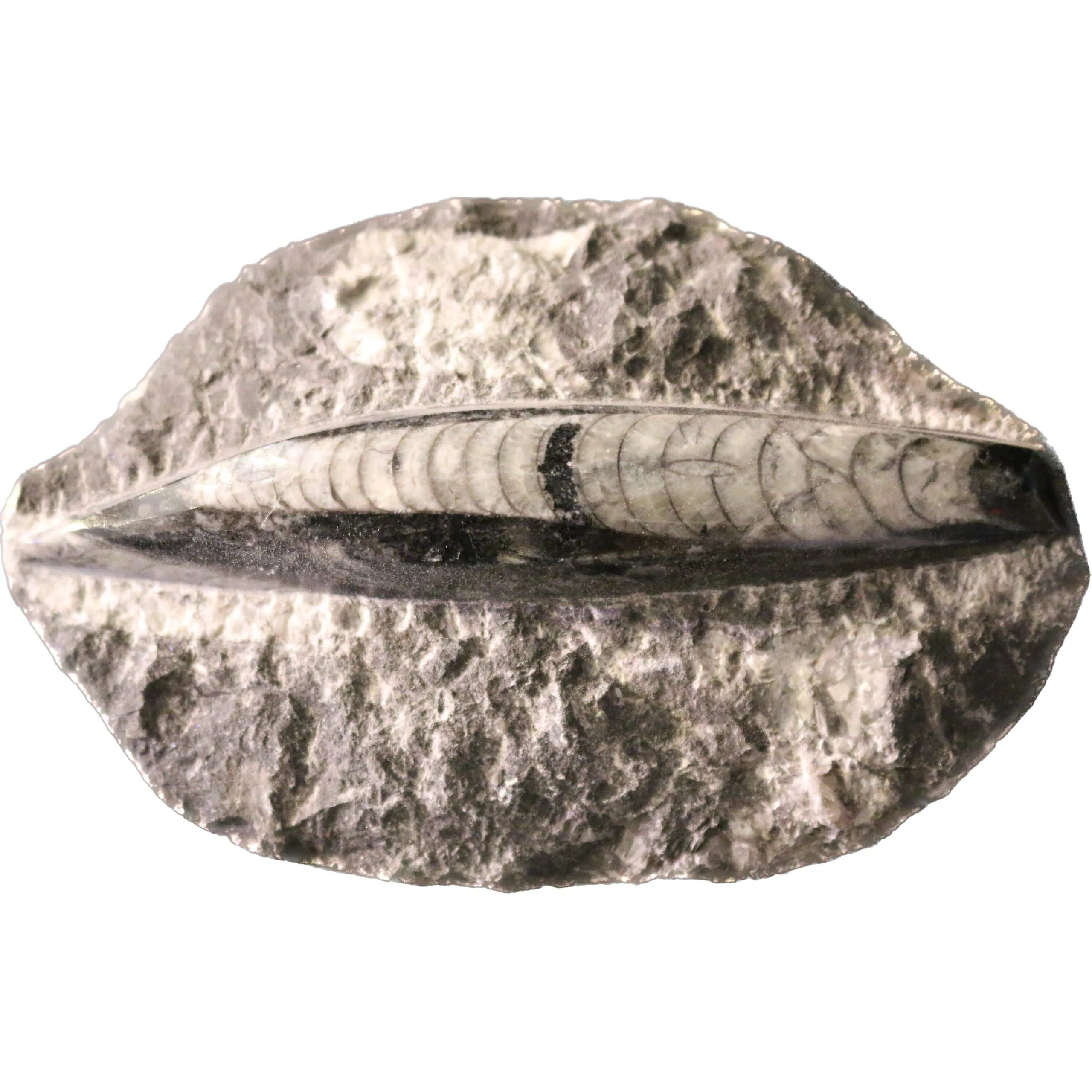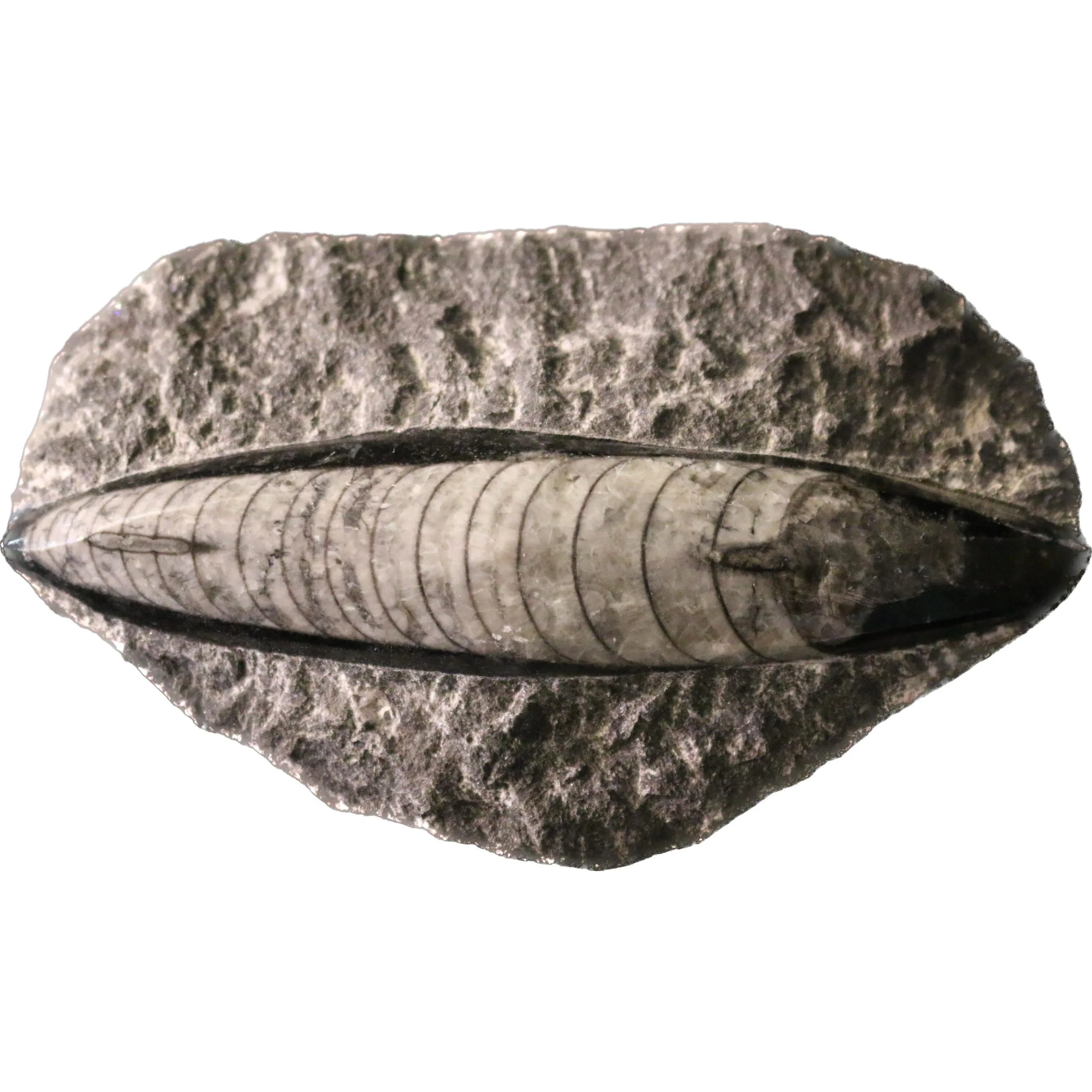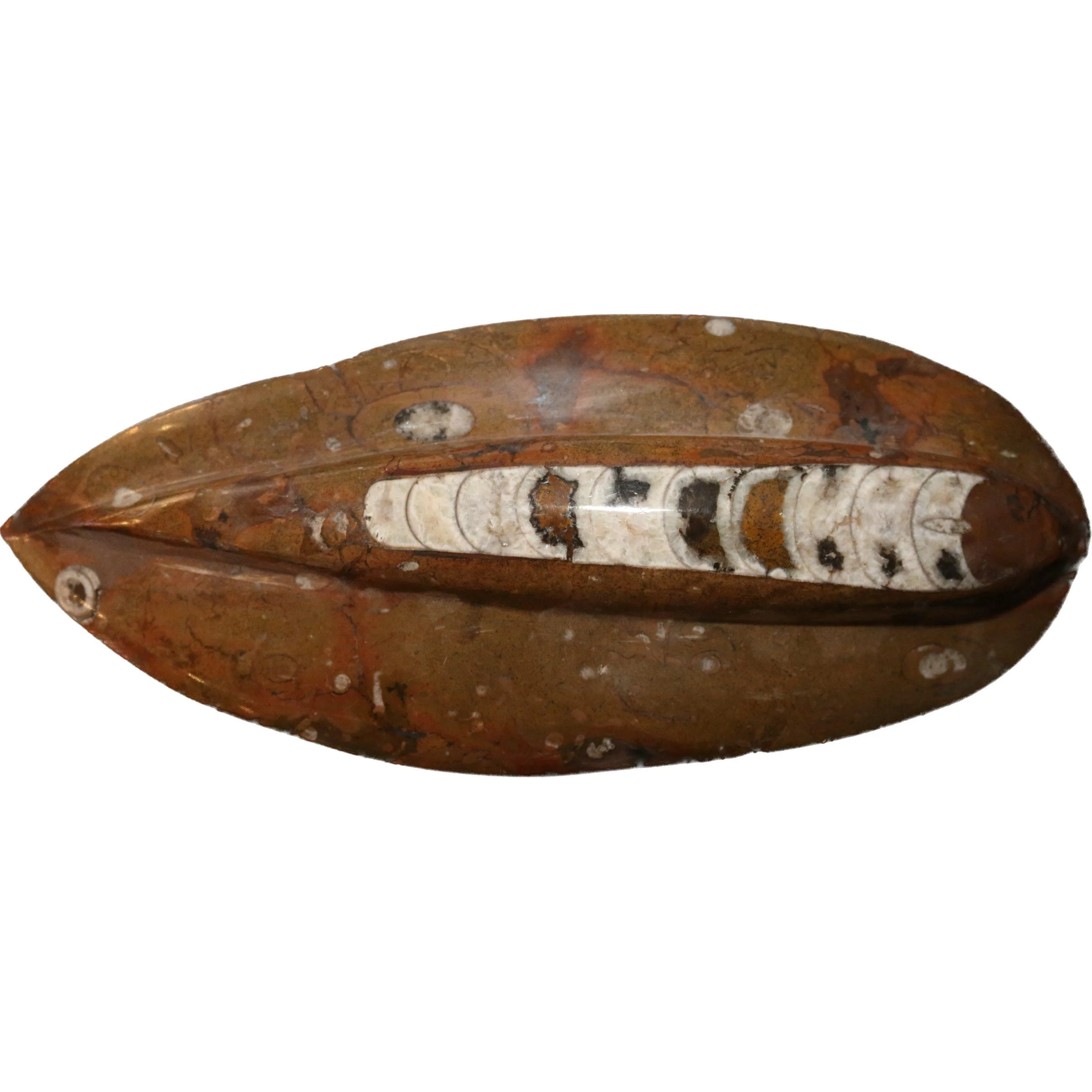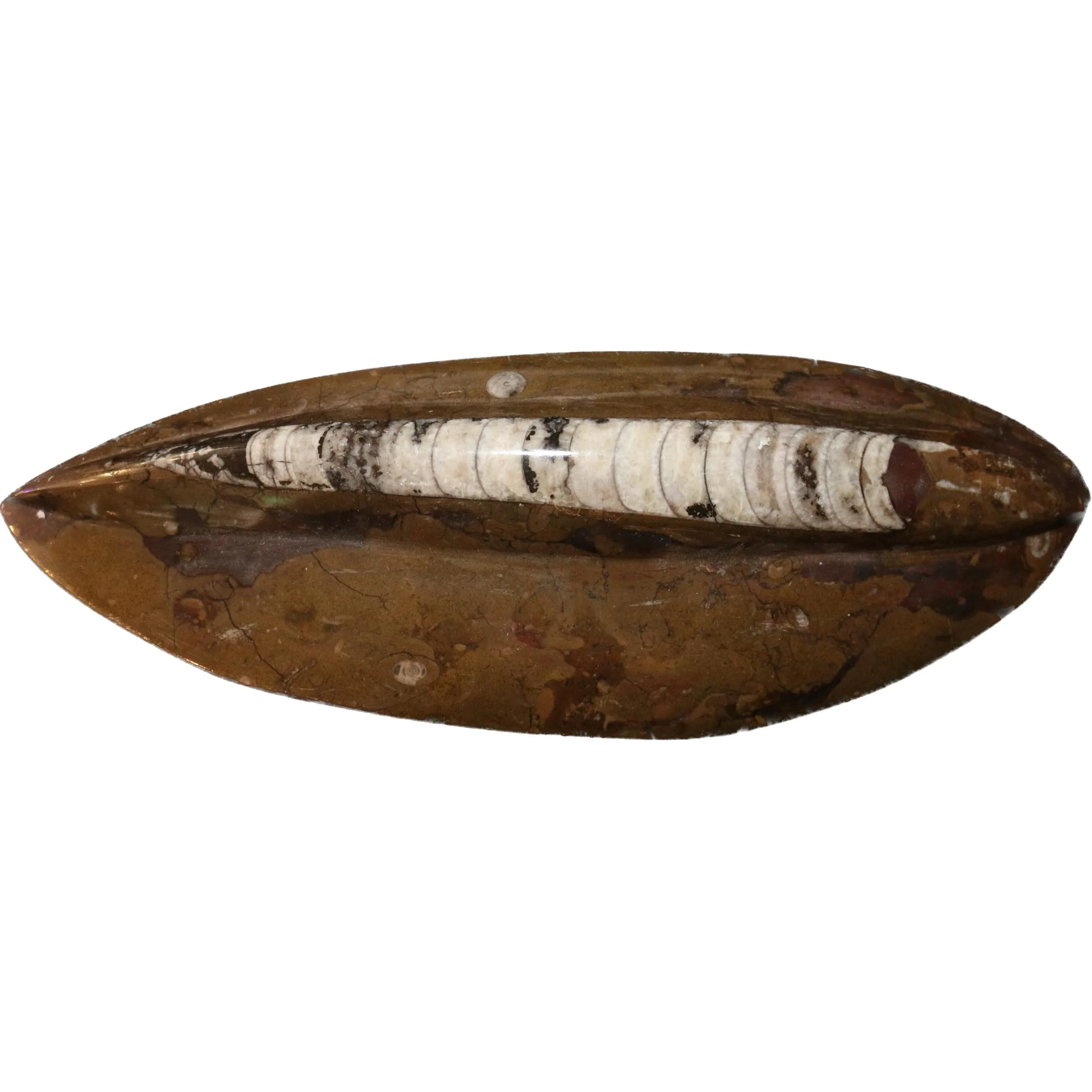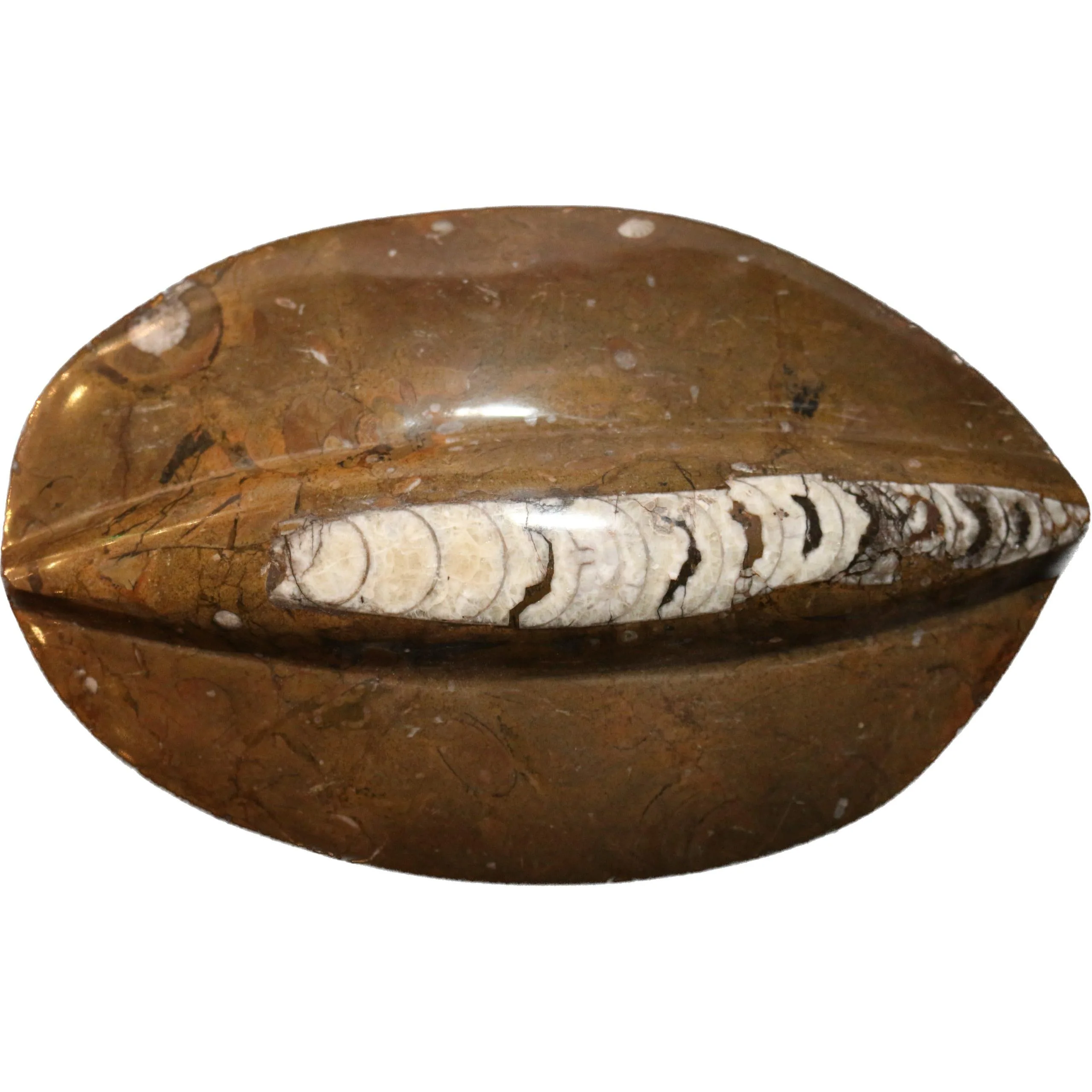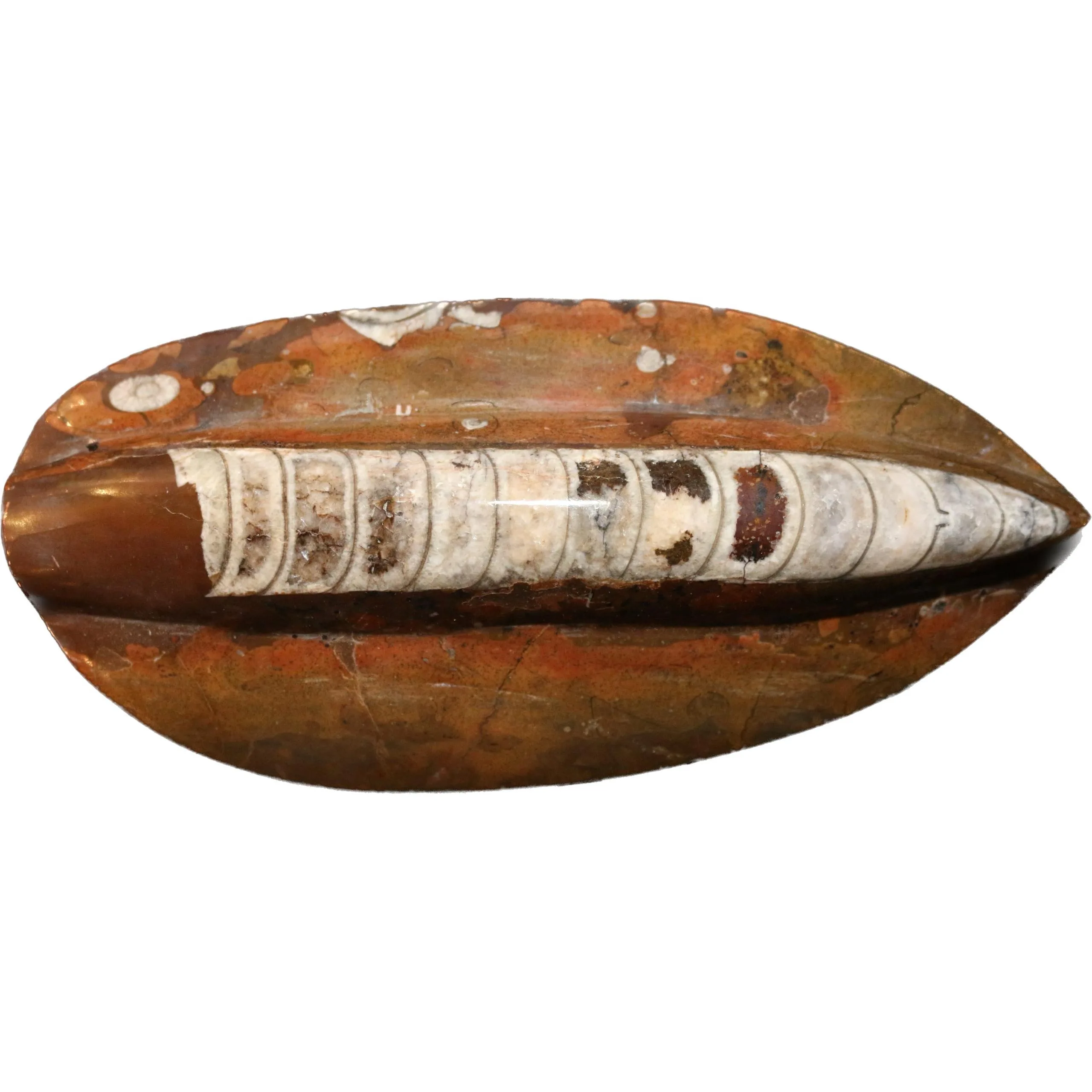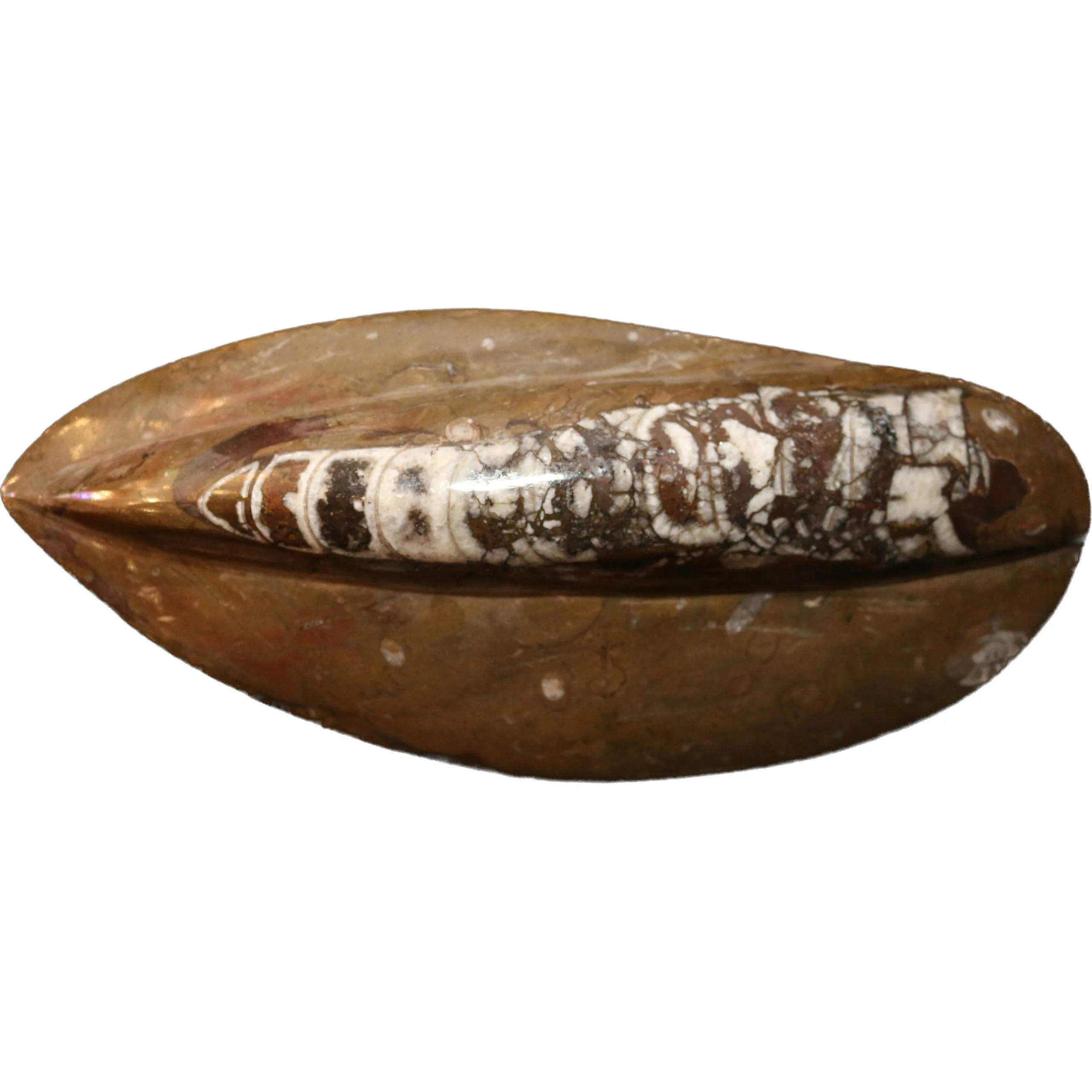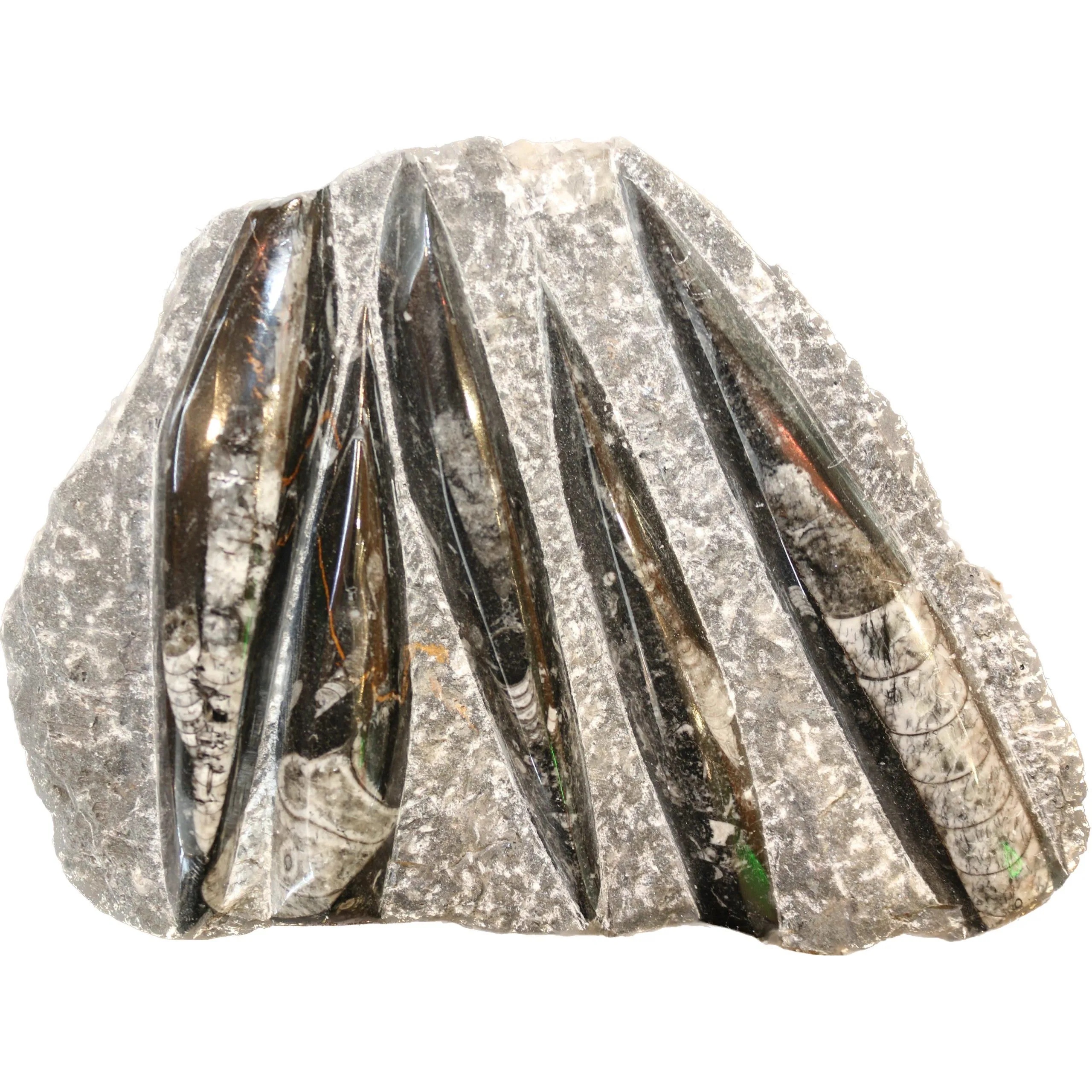Showing all 22 results
-
Orthoceras Single Morocco
$14.95 -
Orthoceras Single Morocco
$14.95 -
Orthoceras Single Morocco
$14.95 -
Orthoceras Single Morocco
$14.95 -
Orthoceras Fossil Bookends
$94.95 -
Orthoceras Single Morocco
$12.00 -
Orthoceras Single Morocco
$10.00 -
Orthoceras Single Morocco
$10.00 -
Orthoceras Single Morocco
$10.00 -
Orthoceras, Morocco 9×7 inch
$25.00
Orthoceras is a genus of extinct marine mollusks that lived during the Paleozoic era, from the Ordovician to the Triassic period, approximately 488 to 200 million years ago. These ancient creatures were cephalopods, related to modern squids, octopuses, and nautiluses. Orthoceras had a long, straight shell divided into chambers, with the animal living in the largest chamber at the end of the shell. The shell of Orthoceras was buoyant, allowing it to float in the ocean and move through the water by jet propulsion, similar to modern cephalopods.
Orthoceras fossils are abundant and found worldwide, often preserved as flattened shells in sedimentary rocks.


